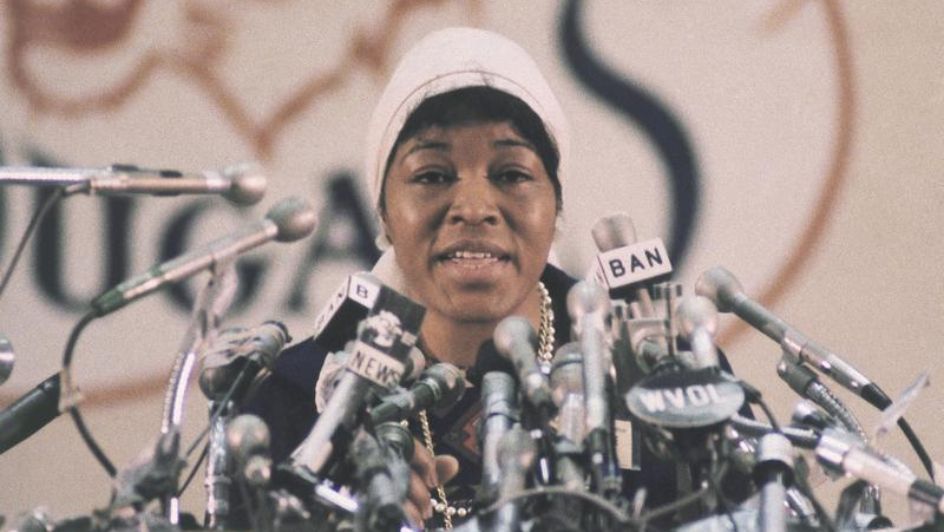#Throwback Thursday – 23 June

New technologies are discovered every day; simultaneously, lifestyles and customs that were once ignored or discriminated against are becoming recognised, understood and integrated into our daily lives.
For that reason, we need to learn to be grateful for our blessings and never take them for granted – the people of the past don’t enjoy the same privileges that we do now, although it can be said that there are others out there who don’t even share these same privileges.
On that note, take a look at these three events that went down in history on 23 June:
1868 – The Ingenuity of QWERTY
Ever wondered who came up with the quirky QWERTY design for the keyboard on your computer? We have an American man named Christopher Sholes to thank for that.
One hundred and fifty-four years ago on this day, Sholes – who was a newspaper editor – was granted a patent for a typewriter (the first modern one to sell commercially, at least). His first effort featured a keyboard layout that was arranged alphabetically.
However, there was a problem right off the bat: the rapid speed of typewriting operators often meant that the metal arms of the letters became tangled together. This led to Sholes and his business partner, Amos Densmore, to tweak the keyboard layout.
After working out which letters were the most used, the pair proceeded to design a layout whereby these letters were placed as far as possible away from each other so that the metal arms wouldn’t get tangled up. The final layout was the QWERTY keyboard, which Sholes and Densmore later sold to the Remington company, which used the same layout on their eponymous typewriters.
QWERTY is still in use today on desktop computers, laptops, and even on-screen keyboards for smart TV-sets!
1912 – Happy Birthday, Alan Turing
Speaking of computers, today marks the 110th birthday of Alan Mathison Turing, the “father of modern computing”.
Born in London, England, Turing went to study mathematics at the University of Cambridge in 1931. In 1934, in recognition of his research into probability theory, he was elected to a fellowship at the illustrious King’s College; two years later, he moved across the pond to finish his Ph.D. in mathematics at Princeton University in New Jersey – by the time it was completed, he was 26.
Indeed, Turing proved to be a smart, capable mathematician, making profound leaps in mathematical logic, encryption and artificial intelligence, among other related fields. When he returned to his native England in 1939, he joined the Government Code and Cypher School at the onset of World War II, and his contributions to the war effort were enormous.
This included helping to invent the “Bombe”, a code-breaking machine based on an earlier Polish invention. The Bombe was able to decipher encrypted German military communications, which they created using the seemingly impenetrable “Enigma”.
Eventually, the Allies were able to turn the tide on the German opposition by breaking their supposedly unbreakable codes, as Turing was able to discover Enigma’s one single flaw: no letter could be coded to itself. Based on this information, Bombe was able to cycle through all possible combinations of the code within 20 minutes before deciphering it for everyone to see.
Turing was lauded for his work, and he was made an Officer of the Most Excellent Order of the British Empire.
Alas, he was convicted of “gross indecency” – per British law at the time, homosexuality was a punishable crime.Turing, a closeted homosexual man, was not only sentenced to 12 months of hormone therapy, but he was also never allowed to work for the national post-war codebreaking centre. Afterwards, he settled in Manchester, where he dedicated himself to computing and researching artificial life.
Sadly, Turing died at the relatively young age of 42 in 1954. Suicide by way of ingesting cyanide was named as the cause of death, although many speculate that foul play was involved. Nevertheless, it was only in 2009 that the British government issued a posthumous apology for their unfair treatment of Turing; Queen Elizabeth II would follow up with a royal pardon four years later.
1997 – Remembering Betty Shabazz
23 June also marks a tragic event: the death of Betty Shabazz, a Civil Rights advocate and the wife of Malcolm X.
Born in 1934 (possibly in Pinehurst, Georgia, but raised primarily in Detroit, Michigan), Shabazz experienced racism persistently in her young adult years: when she went to study at Tuskegee Institute in Alabama – where segregation laws known as “Jim Crow laws” were practised in the extreme – she experienced high levels of racial bigotry.
She experienced the same, albeit only slightly toned down, when she went to study nursing at the Brooklyn State College School of Nursing in New York City. Be it as it may, she was frustrated and angry by this appalling system that discriminated against her and her fellow African Americans.
During her second year of studying, Shabazz was invited to a party at the Nation of Islam temple in Harlem. After visiting it a second time, she met her future husband, an articulate and charismatic minister named Malcom X. They would get married in 1958 and have six daughters together. Together, they would prove to be influential educators and activists during the Civil Rights movement, advocating for the rights and equality of their brethren.
In 1965, Malcolm X was assassinated by three members of the Nation of Islam – which he and Shabazz had left the year before – while he was giving a speech at the Audubon Ballroom in New York City. Shabazz never remarried and raised their daughters by herself, all the while continuing to study in the fields of higher education administration and health sciences. She eventually earned a doctorate in 1975.
Alas, Shabazz’s life was cut short on 1 June in 1997: her 12-year-old grandson, Malcolm Shabazz – who was living with his grandmother in New York City at the time – set fire to her apartment. She would suffer horrendous burns that covered 80% of her body. After three weeks, she succumbed to her injuries and passed away at Jacobi Medical Centre in the Bronx.
In the aftermath of Shabazz’s death, civil rights leader Jesse Jackson said in a statement, “She never stopped giving and she never became cynical. She leaves today the legacy of one who epitomised hope and healing.”
Image Credit: Source


















